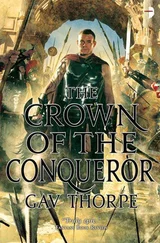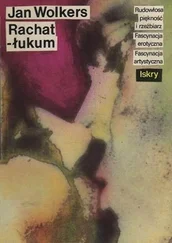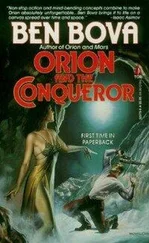Jan Kjærstad - The Conqueror
Здесь есть возможность читать онлайн «Jan Kjærstad - The Conqueror» весь текст электронной книги совершенно бесплатно (целиком полную версию без сокращений). В некоторых случаях можно слушать аудио, скачать через торрент в формате fb2 и присутствует краткое содержание. Год выпуска: 2007, Издательство: Arcadia Books, Жанр: Современная проза, на английском языке. Описание произведения, (предисловие) а так же отзывы посетителей доступны на портале библиотеки ЛибКат.
- Название:The Conqueror
- Автор:
- Издательство:Arcadia Books
- Жанр:
- Год:2007
- ISBN:нет данных
- Рейтинг книги:3 / 5. Голосов: 1
-
Избранное:Добавить в избранное
- Отзывы:
-
Ваша оценка:
- 60
- 1
- 2
- 3
- 4
- 5
The Conqueror: краткое содержание, описание и аннотация
Предлагаем к чтению аннотацию, описание, краткое содержание или предисловие (зависит от того, что написал сам автор книги «The Conqueror»). Если вы не нашли необходимую информацию о книге — напишите в комментариях, мы постараемся отыскать её.
The Conqueror — читать онлайн бесплатно полную книгу (весь текст) целиком
Ниже представлен текст книги, разбитый по страницам. Система сохранения места последней прочитанной страницы, позволяет с удобством читать онлайн бесплатно книгу «The Conqueror», без необходимости каждый раз заново искать на чём Вы остановились. Поставьте закладку, и сможете в любой момент перейти на страницу, на которой закончили чтение.
Интервал:
Закладка:
So when Jonas Wergeland became a globetrotter, he was in fact only doing the same thing on a larger scale: he embraced the world. Jonas Wergeland did not travel to distant lands in search of thrills and excitement like so many others; he set off in search of security. Which is why he never felt anxious but dared to let things happen. When he landed in Bombay and, as usual, thought to himself ‘Where will chance take me this time?’ he could never have guessed that his trip to India would lead him into a living loop, a loop capable of squeezing the life out of him in a single second.
But it was Ahmadabad, not Bombay, which was the first stop, for Jonas and his travelling companion had not come to India to see starving children sleeping on pavements with garish film posters plastered, like dreamscapes, on the walls above their heads. This was not to be yet another tour from which one returns with a head full of images of the ceaseless, claustrophobic crowds mixed with memories of one’s own painful attack of diarrhoea. They did not block out the noise and the stench and the shocking sights of Indian city life, but they wanted to see more than people doing their business in full view of everyone, more than the flies and the dirt, the funeral pyres and black exhaust fumes, the ragged beggars sheltering under temple roofs bedecked with a Disney-hued growth of obscure gods and swarming with monkeys. This was to be a visit that would leave some edifying imprint on them, preferably indelible impressions of buildings. Because they were both attending the College of Architecture, and this was in the nature of a study trip. While others went to Rome, Jonas and Inga V. went to India, but it was the modern India they had come to see, the new temples. And just as Benares was a holy place for Hindus, so Ahmadabad was a Mecca for architects, inasmuch as the city was home to masterpieces by both Le Corbusier and Louis Kahn — not for nothing did those two names call to mind a conjuror and a conqueror.
Inga V. and Jonas Wergeland had never really been close friends, even though they were in the same class and had known one another for some years. In fact Jonas would probably have said that he didn’t like her, particularly disliked her penchant for cigarillos and the way she meticulously noted down all her observations in work journals, as if knowing she would one day be famous. And he knew she had her reservations about him: more than once when they were talking he had caught her glancing at her watch. So he was surprised when she — the last person he had asked — said she would come with him. ‘On one condition,’ she said. ‘That you don’t go getting any ideas.’ Jonas found it hard not to laugh. As if it would ever have occurred to him to think of Inga V. in that way.
Now, as two colleagues with nothing in common but a professional interest, they explored Ahmadabad, armed with sketchbooks and cameras. And their focus was most definitely not on the dusty splendour of the old city, nor on the countless, ultra-picturesque drying racks hung with freshly dyed cottons from the local textile mills; instead they went to see — or rather, basically made a pilgrimage to — the Indian Institute of Management, designed by Louis Kahn: a college complex on the outskirts of the city, a campus where it was the overall picture which impressed the two students most of all, the way in which Kahn had juggled with the basic forms — circles, squares, diagonals, arcs. While Jonas — and this I hope you will now understand, Professor — extolled the sacral quality of light and shade in the shady walkways, Inga V. was more interested in the building materials and the sculptural attributes of the buildings. She loved stone, everything that had to do with stone, natural or fired, was almost brought to her knees by Kahn’s use of the local brick. ‘Not since the Romans, not since the master builders of the Caracallas, has anyone understood the nature of brick and its potential as Louis Kahn does,’ she said.
The following day, on the north side of the city, they took in Le Corbusier’s lovely — from a landscape-architecture point of view — Villa Sarabhai, as well as the three buildings by him which lay alongside one another on the left bank of the river: a museum, a private house and, possibly the most interesting, despite the weathered aspect of its concrete, the Mill-owners’ Association Building where the use, not least, of an open but deep and slanting brise-soleil drew cries of delight from them. After a look round the inside of the building, a space notable for the bold interplay of curves and lines, Jonas exclaimed blissfully: ‘It’s an absolute revelation! Those shadows are downright tangible!’ They revelled in the place, felt how the encounter with this piece of architecture, which was also a work of art, sparked off masses of ideas inside their own heads. It all boiled down to one thing: light and shade. This was the enigma of architecture, as it was in life.
In Udaipur, their next stop, they celebrated the success of their trip so far, by checking in to the Lake Palace Hotel — a couple of days with fountains and marble floors, rooms with chairs like thrones and peacock feathers in vases; so when they got to Jaipur, lying rose-coloured, almost cliché-like, between the mountain ridges, they opted for a somewhat cheaper hotel to save overstretching their budget. It didn’t worry them that they had to share a double room, but they soon realized they were going to miss the air conditioning. India quivered at its hottest, you could positively feel the pressure of the monsoon which was just around the corner. Jonas thought longingly of his first attempt at being an architect, the ice monument on Steinbruvannet.
Inga V. was more enamoured with actual Indian culture than Jonas, so on the day after their arrival they split up: she wanted to find a place to see classical Indian dancing. Jonas chose instead to take a walk through the old town’s network of broad, straight streets and visit the Hawa Mahal; on the way home from this Palace of the Winds — which had made him feel as if he were standing before an organ façade of pink sandstone — outside the city wall, he decided to take a shortcut between two streets and for a moment escaped the traffic, the sea of beeping scooters and overloaded lorries decorated like temples. He crossed a piece of open ground flanked by two tumbledown buildings, their walls blazoned with illegible inscriptions, and came suddenly face to face with a man and an elephant. Jonas was so taken aback that he just stood there gaping, simply staring at these two creatures, both of them chewing: the man on pan and the elephant on twigs. Again Jonas was struck by the intrinsic sense he had wherever he went in India: that he was in a zoo, or that he was a voyeur. The two were standing in a sort of stall, between an old Ambassador and a cart, as if the elephant was the third possible mode of transport. And as the Palace of the Winds had made Jonas think of the organ in the church, so the animal put him in mind of Grorud and his childhood, because of the exquisite patterns painted on the elephant’s forehead and trunk. They reminded him of the red letter day at school when the teacher brought out the wonderful, but seldom used, box of coloured chalks and they were allowed to cover the whole board with a Christmas picture, after which the teacher wrote ‘Do not remove!’ in the bottom corner, also perhaps as an order to the children’s memories not to forget this. If I stood here long enough, Jonas thought, I bet I could relive the whole of my life so far. As I say: for Jonas Wergeland all journeys, no matter how exotic, were journeys home.
Although warned by a faint contraction of his testicles, he could not bring himself to move on. Jonas had the definite impression that the elephant, not the man, was the central character in this tableau: that he was looking at a wise god and his dwarf. The man, a little older than himself, was clad in a grubby dhoti, the sort of loincloth with which Ghandi caused such a stir at Buckingham Palace, and on his head he wore one of the gaily coloured turbans seen everywhere in those parts. He smiled happily, didn’t mind Jonas stopping to look. ‘Isn’t he grand?’ he said, patting the elephant. A penetrating, sickly stench rose from the enormous droppings on the ground. ‘His name is Mohan, he has been in the circus, and now he is going to be a temple elephant, we have just taken part in a wedding.’ The elephant seemed, to Jonas, to be observing him, assessing him with eyes that nestled within whorls of wrinkles. ‘I too have worked in a circus,’ the man went on, motioning to Jonas to come closer. Jonas did not dare, branches crunched and snapped between the elephant’s jaws. ‘When I was a young man I had a chimpanzee,’ the man said. Jonas thought the Indian was pulling his leg, then he saw that there were tears in the man’s eyes. ‘Did you know that a chimpanzee costs more than a tiger? Li-Li was its name, you know. Called after Trygve Lie, the Secretary-General of the United Nations. I saw a picture of Mr Lie during the conflict in Kashmir; they looked like one another, those two — the ears. And he was a man who changed history. You know Hanuman the monkey god was a great warrior, he helped Rama…you know our epic story?’ Jonas had not said where he came from, but he liked this comparison between Trygve Lie and the monkey god, suddenly he found himself taking a new, more relaxed, attitude to Grorud’s famous son.
Читать дальшеИнтервал:
Закладка:
Похожие книги на «The Conqueror»
Представляем Вашему вниманию похожие книги на «The Conqueror» списком для выбора. Мы отобрали схожую по названию и смыслу литературу в надежде предоставить читателям больше вариантов отыскать новые, интересные, ещё непрочитанные произведения.
Обсуждение, отзывы о книге «The Conqueror» и просто собственные мнения читателей. Оставьте ваши комментарии, напишите, что Вы думаете о произведении, его смысле или главных героях. Укажите что конкретно понравилось, а что нет, и почему Вы так считаете.











